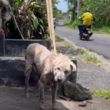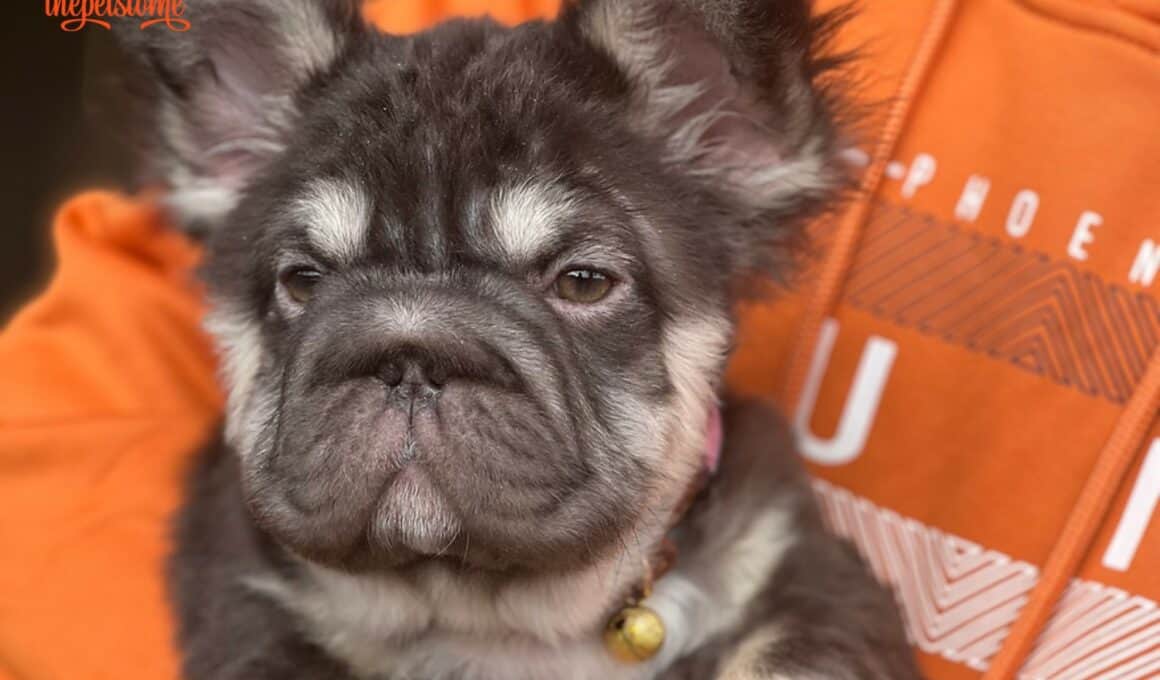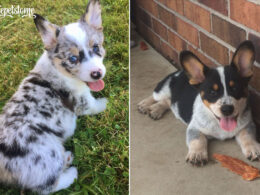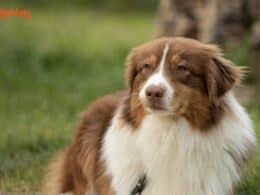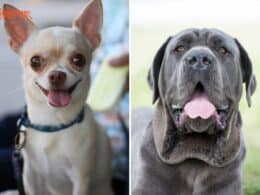Table of Contents Show
For starters, before we dive into Big Rope French bulldogs specifically, let’s take a quick look at the history of the French bulldog more generally, or (to address it by its original French name) “le bouledogue Français”!
The Frenchie as we know it today is a not-too-distant descendent of the English bulldog. Toy (smaller-sized) strains of English bulldog were imported into France in the mid-nineteenth century. The breed rapidly spiked in popularity and began to take on more of the characteristics we recognize and love today.
This occurred due to selectively breeding for desired features, including its notoriously cute bat ears and unique, outsized personality!
Unsurprisingly, it didn’t take long for American tourists vacationing in France to fall in love with this spunky little dog, and thus the breed made its way across the ocean to the United States. The world’s first French bulldog club was established, and formal standards were created regarding the breed (including the signature bat ears, of course!)
As of 2022, the French bulldog was listed as America’s most popular breed (based on American Kennel Club registrations); a long way from its humble origins!
What’s Different About The Big Rope Frenchie?
A newer bloodline of Frenchies has recently appeared, bearing unique genetic and phenotypic (visual) characteristics that set it apart from the standard French bulldog.
Whilst not recognized formally by the American or British Kennel Clubs, the Big Rope Frenchie is considered by many breeders and enthusiasts to be an up-and-coming new breed.
Being such a novel player in this breed’s history, the Big Rope variant of these dogs remains rare to see at the time of writing. In fact, working as a veterinarian in the North of England, I have only welcomed a single Big Rope into my consult room in the past year.
Big Rope Enthusiasts have described the breed as structurally well built yet smaller overall in size when compared to a standard French bulldog.
These dogs are reported to have calm, relaxed personalities, meaning they may present an excellent choice in terms of their temperament if you are a city or apartment dweller; working with limited space; or looking to add a dog to a household that already includes children and other canine family members.
But wait, what about the Big Rope part?
Well, here we arrive at the defining feature of the strain. Big Ropes have been selectively bred to exhibit a large rope-like skin fold running closely across the dorsal aspect (the top) of their nose, as well as (usually) a number of additional individual large facial skin folds. These unique features are held in high regard by Big Rope breeders, who may most highly prize the dogs possessing the largest “ropes”.
It is also worth mentioning that a minority of Big Rope Frenchies will exhibit “fluffy” characteristics. These dogs have longer, softer, and fluffier coats and typically command a higher price tag than non-fluffy Big Ropes.
What Are The Positive Aspects Of The Breed?
For many people, of course, the breed’s physical appearance is considered a significant positive aspect. But appearance aside, for a lot of people, the love of the breed is far more than skin-deep.
The house-sized, unique personality of the Big Rope Frenchie is what draws many individuals to the breed. Personality traits commonly exhibited by these dogs include a loving nature; calm disposition; a relatively low desire to bark (useful in an apartment); comical, clown-like persona, and often a small dose of stubbornness to top things off!
Compared to many other breeds, Big Rope Frenchies are reported by many as a good choice in households with children and other dogs. They also do not tend to make destructive housemates, especially compared to higher-energy breeds such as the Border Collie or the Labrador Retriever.
What Are The Negative Aspects Of The Breed?
Like the standard French bulldog, Big Rope Frenchies are brachycephalic; that’s a fancy way of saying they have a relatively flat, compressed face with a short muzzle. Unfortunately, this means these dogs tend to suffer from brachycephalic obstructive airway syndrome (‘BOAS’ for short).
The signs of BOAS syndrome include difficulty breathing; difficulty exercising; problems with maintaining an appropriately cool, safe body temperature in warmer weather; loud breathing noises (medically called “stertor”); snoring, and sleep deprivation.
Sadly, these symptoms can be fatal in some instances, especially on hot days or if these dogs are pushed too hard regarding exercise. And in many milder cases, the symptoms are still life-limiting to some extent.
A surgical procedure exists which can reduce the signs and severity of the syndrome to some extent, and this should be discussed with your vet without delay if you believe your dog could be suffering from BOAS syndrome.
In addition, compared to many other breeds, French bulldogs (including Big Ropes) are more likely to develop food or environmental allergies, ear infections; periodontal disease and angular limb deformities (a fairly complicated type of orthopedic disorder).
How Much Does A Big Rope French Bulldog Cost?
The upfront cost to acquire a Big Rope Frenchie varies widely depending on geographical location; breeder; bloodline; coloring; number and size of “ropes”; and the presence or absence of several additional genetic traits, for example, “fluffy”.
My initial research suggests that a Big Rope Frenchie may cost as little as $1260 / £1000 in certain parts of the United Kingdom or as much as $20,000 /£15,860 for puppies exhibiting traits in high demand in some regions of the United States.
Of course, in addition to the upfront cost of a Big Rope puppy, it is very important to consider insurance and/or healthcare costs for these dogs. Speaking from ample experience, and having seen far too many heartbreaking situations where a lack of coverage results in tragedy, I can tell you that pet insurance should not be considered optional for French bulldogs.
I’ll say that again for those in the back: pet insurance should not be considered optional for French bulldogs!
…The reason is that, as previously mentioned, these rather sweet little dogs can develop some pretty expensive health issues in some instances.
Depending on where you live and what level of insurance coverage you choose, you can expect an insurance policy for a Big Rope French bulldog to set you back anywhere from $30-100 (£24-80) per month.
Accounting for this cost right from the start can save you money and stress and is well worth doing for any would-be Big Rope pet parent.
Featured image credits: AZfrenchbulldogs.com / Pinerock FRENCHES.

